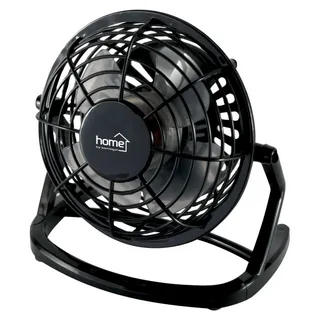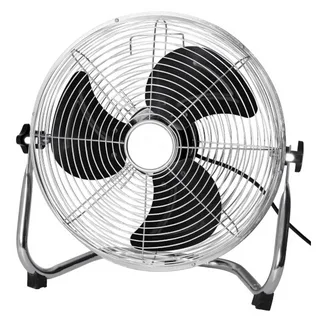Are you looking to improve the indoor air quality of your home and create a healthier living environment for you and your family? One solution that can help achieve this is by installing a house ventilator. House ventilators play a crucial role in ensuring fresh air circulation, reducing humidity levels, and preventing mould growth and other harmful substances. In this blog post, we will explore the benefits of using a house ventilator and how it can enhance indoor air quality. We will also provide tips on choosing the right home ventilator for your home.
Understanding Indoor Air Quality and Its Impact
The quality of air within our homes has a profound effect on our health and overall well-being. As we spend a significant portion of our time indoors, the presence of pollutants in our indoor environment can lead to various health issues, including respiratory conditions, allergic reactions, and other ailments.
Common contaminants such as dust mites, pet dander, and pollen contribute to the degradation of indoor air quality alongside volatile organic compounds (VOCs) emitted from paints, cleaning supplies, and other household products. Additionally, inadequate ventilation can exacerbate the situation by trapping these pollutants inside, preventing the dilution or removal of harmful substances from our living spaces.
Understanding the impact of these factors on indoor air quality is the first step towards creating a healthier home environment. It highlights the importance of adopting measures such as installing a house ventilator to ensure the continuous circulation of fresh air, thereby mitigating the risks associated with poor indoor air quality and furthermore, acknowledging the sources of indoor air pollution aids in implementing targeted strategies to reduce exposure and safeguard the health of occupants.
 The Role of House Ventilators in Improving Air Quality
The Role of House Ventilators in Improving Air Quality
House ventilators are ingeniously designed to facilitate the exchange of indoor air, often laden with pollutants, for fresh outdoor air. This continuous replacement is pivotal in purifying the atmosphere within our homes. These systems extract stale, contaminated air and concurrently draw in clean air from outside, thereby ensuring a relentless supply of purified air. Such a process is instrumental in diminishing the concentrations of indoor pollutants, encompassing everything from everyday dust and allergens to more harmful substances like volatile organic compounds (VOCs). By doing so, house ventilators play an indispensable role in mitigating potential health hazards linked to poor air quality, including respiratory issues and allergic reactions.
Additionally, these systems address excess moisture and odours, which can significantly compromise our living environments’ comfort and healthiness. The strategic implementation of house ventilators thus not only elevates air quality but also enhances the overall well-being of inhabitants by fostering a consistently clean and healthy indoor atmosphere. This operation mechanism underscores the importance of house ventilators in modern homes, particularly in areas prone to pollution or where natural ventilation is insufficient to maintain optimal air quality.
Benefits of Enhanced Fresh Air Circulation
Installing a house ventilator heralds numerous advantages, with enhanced fresh air circulation standing at the forefront. This process is vital for sustaining a healthy and comfortable indoor environment, paramount for the well-being of all inhabitants. The influx of fresh air acts as a natural diluter of indoor pollutants, effectively reducing the concentration of airborne contaminants such as dust, pollen, and volatile organic compounds. Consequently, individuals residing in environments with superior air circulation report fewer respiratory problems and allergies, attributing to an overall improvement in physical health.
Moreover, fresh air helps dispel odours that may accumulate from cooking, pets, or other household activities, ensuring that the indoor atmosphere remains pleasant and inviting. A ventilated space also discourages the stagnation of air, a factor that can significantly contribute to the feeling of stuffiness and discomfort within a home. By enabling the exchange of indoor air with outdoor air, house ventilators ensure that the indoor environment remains vibrant, fresh, and conducive to living.
It’s also worth noting that the strategic introduction of fresh air can assist in regulating indoor temperatures, contributing to a more energy-efficient home. During cooler periods, the influx of cooler air can reduce the need for air conditioning, conserving energy and lowering utility bills. Integrating a house ventilator into the domestic environment is, therefore, not only a health-conscious decision but also an economically and environmentally considerate choice, affirming its significance in modern living spaces.
Reducing Humidity and Preventing Mould Growth
High humidity levels within a dwelling are not simply a discomfort but a breeding ground for mould and mildew, which pose significant health concerns. Incorporating a house ventilator into your home is an effective countermeasure against this. By facilitating the expulsion of air laden with moisture and ushering in drier air from the exterior, a ventilator ensures the ambient humidity remains at levels unconducive to the proliferation of mould. This mechanism is instrumental in safeguarding both the occupants’ health and the property’s structural integrity.
Hallmarks of excessive indoor moisture, such as condensation on windows or a musty odour, signify the urgent need for improved ventilation. A house ventilator addresses these issues head-on, continuously renewing the indoor atmosphere and curtailing the moisture mould spores require to thrive. It is a proactive step towards maintaining an environment that detracts from mould growth, thus contributing significantly to a dwelling’s overall air quality and inhabitant wellness.
Beyond health implications, the control of humidity through adequate ventilation preserves furnishings, wallpapers, and structural components from the detrimental effects of mould, ensuring they remain pristine over time. Thus, the implementation of a house ventilator emerges as a critical strategy in the broader endeavour to foster a healthy and durable living space.
Choosing the Right Home Ventilator for Your Home
Selecting the appropriate home ventilator is a task that demands careful consideration. Factors such as the size of your home, local climate, and specific air quality concerns should guide your decision. A simple exhaust fan might suffice for smaller spaces, offering adequate air exchange. However, larger homes or areas with extreme weather conditions might benefit from more sophisticated systems like Energy Recovery Ventilators (ERVs) or Heat Recovery Ventilators (HRVs). These are particularly adept at managing the energy cost of heating or cooling the fresh air they introduce.
Additionally, if your household includes individuals with allergies or respiratory conditions, choosing a ventilator with advanced filtering capabilities is crucial to removing allergens and pollutants effectively. It’s also wise to consult with a professional who can assess your home’s ventilation needs, considering the existing HVAC systems and recommending a solution that ensures optimal air quality and energy efficiency. Remember, the goal is to secure a ventilating solution that aligns with your health requirements and environmental conditions, ensuring your home remains a comfortable and healthy space for all occupants.
Installation and Maintenance Tips for House Ventilators
Ensuring your house ventilator is properly installed is paramount for achieving the desired air quality improvements. Engaging a certified HVAC technician is advised, as they possess the expertise to integrate the ventilator seamlessly with your existing heating, ventilation, and air conditioning systems. This step is critical for the unit’s efficiency and avoiding potential complications that could arise from incorrect installation.
Once installed, a routine maintenance schedule becomes essential to maintain the ventilator’s performance. This involves periodic checks and cleaning or replacing the air filters, crucial in ensuring clean air circulates throughout your home. Air filters can accumulate dust and other particles over time, impeding airflow and reducing the system’s efficiency.
Additionally, inspecting the ventilation ducts for any blockages or leaks is important. Any obstruction can significantly hinder the system’s air exchange, leading to decreased air quality and increased energy usage. Annual professional inspections are recommended to assess the system’s overall health, promptly address issues, and adjust settings for optimal performance. Adhering to these guidelines will help ensure your ventilator continues to provide the best possible air quality for your home.
Don’t Neglect Your Home Ventilation: Importance of Regular Maintenance
Maintaining the efficiency and effectiveness of your house ventilator necessitates a commitment to regular upkeep. Without this, the system may fall prey to the accumulation of dust and debris, hindering its capability to circulate clean air effectively.
Such neglect can also escalate energy consumption and precipitate unforeseen malfunctions, leading to avoidable expenses. A disciplined approach to servicing, which includes cleaning or replacing air filters, ensures that the ventilator operates at peak performance. Filters, the first line of defence against pollutants, can clog over time, impairing airflow and overall air quality within your home.
Furthermore, monitoring the condition of ventilation ducts is paramount. Any blockages or leaks compromise the system’s efficiency and exacerbate indoor air quality issues. Engaging with a professional for annual checks offers an additional layer of assurance, facilitating the early detection of potential problems and adjustments to maintain optimal functioning.
This routine attention supports the ventilator’s essential role: preserving a fresh, healthy, and inviting atmosphere in your home. Engaging in these maintenance practices ensures the longevity of your system, sidestepping the pitfalls of neglect and safeguarding the air quality and comfort of your living environment.
Conclusion
Ultimately, investing in a house ventilator is wise for any homeowner seeking to elevate their indoor living environment. The significance of ensuring a constant influx of fresh air and maintaining optimal humidity levels cannot be overstated, contributing to a more healthful atmosphere within the home. It empowers inhabitants by drastically reducing pollutants and allergens, underpinning a healthier lifestyle. Ventilators not only mitigate the risk of respiratory issues and allergic reactions but also prevent the growth of mould and mildew, preserving the integrity of the home’s structure and the well-being of its residents.
FAQS
Q: How often should the filters in my house ventilator be replaced?
A: The frequency of filter replacement can vary depending on the specific model of your house ventilator and the level of pollutants in your home. Generally, it’s filters are checked every 3-6 months and replaced as needed to ensure optimal air quality and system efficiency.
Q: Can installing a house ventilator reduce energy costs?
A: Yes, a house ventilator can help in reducing energy costs. By improving air circulation and maintaining a comfortable indoor temperature, ventilators can decrease the reliance on air conditioning during warmer months and heating systems during cooler periods, leading to lower energy consumption.
Q: Is it necessary to hire a professional for the installation of a house ventilator?
A: While some homeowners may possess the skills to install a house ventilator, professional installation is recommended. Certified technicians ensure the system is correctly integrated with your existing HVAC setup, optimising its performance and avoiding potential issues arising from improper installation.
Q: Can house ventilators be used in all climates?
A: Yes, house ventilators are designed to be versatile and can be used in various climates. Models like ERVs and HRVs are particularly beneficial as they can transfer moisture and heat between incoming and outgoing air streams, making them suitable for hot and cold climates by maintaining comfortable indoor humidity and temperature levels.
| Other Good Articles to Read |
| Blogs Rain |
| Cme Blog Spot |
| Garcias Blogs |
| Yyc Blogs |
| Guiade Blogs |
| Blogs-Hunt |
| Impact-Blog |
| Smarty Blogs |
| Ed Blog |
| Mo Blogs |
| Blogs Em |
| Blogs T |
| Related Business Listings |
| Contact Directory |
| Local Business Profiles |

